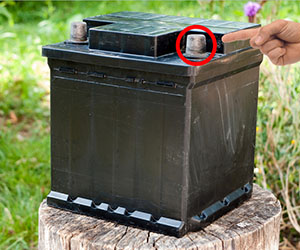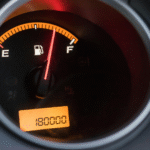The Wild World of Accumulators and Batteries—And Why It’s Okay to Feel Like You’re Drowning in It
Okay, so—let’s be honest right up front. You’ve probably Googled what even is an accumulator? like… more than once. Maybe more than ten times. And yet, you’re still not entirely sure if what you’ve read even makes sense. Maybe you bought something from Amazon (ugh, regret), or maybe you watched three YouTube videos that contradicted each other within the first five minutes. Been there. Truly.
This stuff is maddening. Not because it’s impossible, but because it’s disguised behind this absurd curtain of techno-babble and overengineered complexity that makes even the simplest question feel like a research thesis.
But listen—here’s the real kicker. You can make sense of it. You really can. It’s just that you have to unpeel it like an onion with oddly shaped layers (some sweet, some that make your eyes sting). So yeah, let’s do that. Let’s peel.
Misstep #1: The Names Are Too Similar. And They Lie.
So here’s where most of us trip first—and hard. Someone says “accumulator,” someone else says “battery,” and someone across the room just nods like, “Yeah, same thing.” But. No. That’s like saying a dog is a wolf, or all rectangles are squares. It’s sorta true… and also wildly off.
See—accumulator is this umbrella term (like, a huge umbrella, the kind you might use on a beach during a freak thunderstorm), and under that umbrella, batteries exist. But there are other things there too—hydraulic accumulators, mechanical flywheels, thermal bricks… wild, right?
A battery is always an accumulator, but an accumulator isn’t always a battery. Like how all champagne is sparkling wine but not the other way around. I think.
Why it messes with your brain:
Because language is tricky. Especially when some regions (hello Europe) use “accumulator” when they mean “battery,” and others don’t use it at all unless they’re talking about tractors or hydraulic lifts.
What it causes:
You could buy a lithium-ion pack thinking it’ll work for your solar rig, but it’s the wrong kind entirely. Wrong shape, wrong discharge rate, wrong world.
What helps?
Ask three things before buying anything:
- What kind of energy is being stored? (Is it chemical? Mechanical? Emotional? Just kidding… maybe.)
- Is this rechargeable?
- Does it output electricity, or just pressure?
That mental checklist has saved me from a stupid purchase more times than I care to admit. Once I almost used a sealed lead-acid battery meant for emergency lighting to power my DIY e-bike. Spoiler: didn’t end well. Smelled like melted plastic and regret.
Headache #2: Specs That Sound Like Alien Code
Voltage. Amp-hours. Internal resistance. Watt-hours. Depth of discharge. Honestly, unless you’re an engineer—or pretending to be one on Reddit—this stuff reads like IKEA instructions with the wrong parts.
Where it gets messy:
They throw numbers at you like it’s a math test. But nobody tells you why it matters. What even is 12 volts supposed to do? Why does 100Ah sound like a lot but only lasts 4 hours on your inverter?
Result:
You stand there, staring at a spec sheet, wondering if you’re about to power your house or accidentally build a small bomb.
Simplify it. Really. Just… breathe.
Let’s reduce this monster into bite-sized blocks. Like power Legos:
- Voltage (V): Match your device or system. 12V? Get 12V.
- Capacity (Ah or Wh): Ah = how much juice. Wh = how much juice and at what voltage. Use both.
- Cycle Life: Basically how long it’ll last before it gets tired and bitter.
Example from last week:
I needed to run a mini fridge for my summer road trip. Drew 60W. I had a 12V system. Did the math (with help from a calculator app):
60W × 6 hours = 360Wh. So, I needed a battery with that at minimum. Ended up with a 12V, 40Ah lithium pack. Boom. Cold drinks.
Don’t overthink it—well, do, but only a little.
Twist #3: Charging Rules Are a Minefield
This part? Oh, this part makes people give up. Fast. Because apparently, each battery type has its own little rules. Like a Tamagotchi. Charge too much? Dead. Not enough? Also dead. Wrong charger? Fire hazard. Great.
Why it breaks people:
Because you’re not told why it’s important—just that it is. No context, just consequences.
Real-world example?
My uncle fried a brand-new LiFePO4 battery using a lead-acid charger. One zap and $200 evaporated into the ether. Like Thanos snapped it.
What actually helps?
Make a tiny cheat sheet. Seriously. Print it out. Put it in your glove box or tape it to the wall.
- Lead-Acid: Never drop below 50%. Use a smart charger. Never leave it dead.
- Lithium-Ion: Recharge often, avoid 100% if possible, and NEVER overheat.
- NiMH/NiCd: Let them drain occasionally. Old-school vibes.
Treat them like pets. Each one has its own diet.
Confusion #4: Mismatched Expectations Meet Sad Reality
You know that moment where you think something’s going to work, and then it dramatically doesn’t? That’s this. Like plugging a phone charger into a toaster. (Don’t.)
Why it derails you:
Because we assume all power is just… power. But the context matters. Voltage. Current. Load. Discharge rate. Some batteries can handle sudden surges; others fold under pressure like cheap patio furniture.
Side note:
I once tried using a car jump-starter to power a coffee grinder. The sparks were impressive. Not helpful. But impressive.
Solution?
Make a simple checklist. Ask:
- What device am I powering?
- How much power does it really use (not just peak)?
- How long do I want it to run?
If you don’t know the draw, find a power meter—those plug-in Kill-A-Watt ones are like $20 and they save you HOURS of head-scratching.
Overload #5: Too. Many. Choices. Kill. Your. Brain.
Scrolling through an online battery store is like staring into the abyss. There are hundreds. Thousands. With specs that differ by half a volt, by price, by weight. It’s a vortex.
You get stuck.
I mean—how do you pick between LiFePO4 and AGM when one is cheaper but heavier and the other is lighter but maybe not compatible with your charger? Ugh.
Fix? Get brutally organized.
Create a decision grid. Not fancy. Just this:
| Type | Cost | Weight | Lifespan | Notes |
|---|---|---|---|---|
| Lead-Acid | $$ | Heavy | 500 Cycles | Cheap, slow |
| AGM | $$$ | Heavy | 800 Cycles | Maintenance-free |
| Li-Ion | $$$$ | Light | 2000+ | Fast, efficient |
Score it yourself. By hand. Cross stuff out. Doodle. Swear a little. It’s fine.
Hey—You’re Closer Than You Think
This is messy. It’s confusing. It’s wildly inconsistent and sometimes infuriating. But guess what? You’ve already started peeling back the noise. You’ve asked the questions. You’ve paused long enough to care about the why behind the wattage.
That’s more than most people ever do.
You’re not behind—you’re on the edge of clarity. And no, you don’t have to become an electrical wizard to use this stuff confidently. You just need to stay curious, stay skeptical (especially of marketing), and above all, stay kind to yourself when things don’t click right away.
Eventually, it will. One weird spec sheet, one charging mistake, one overly dramatic spark at a time.
And hey—your next battery might actually do what you want it to. That’s a kind of magic, isn’t it?





3 Comments